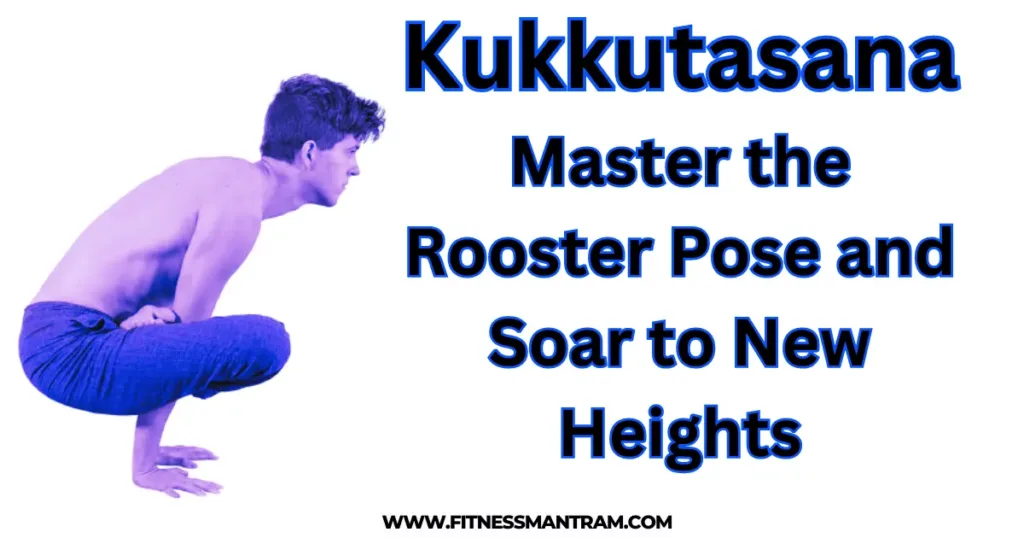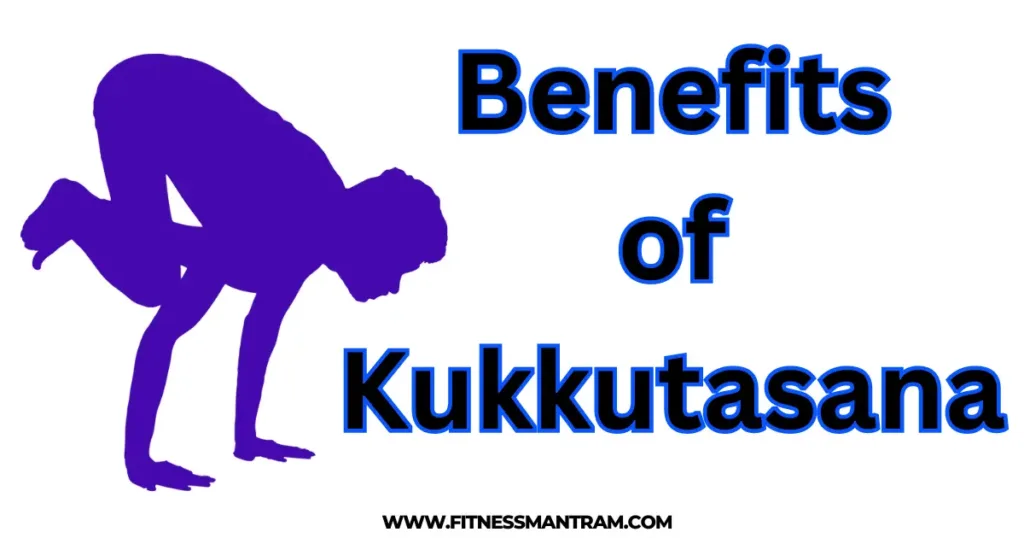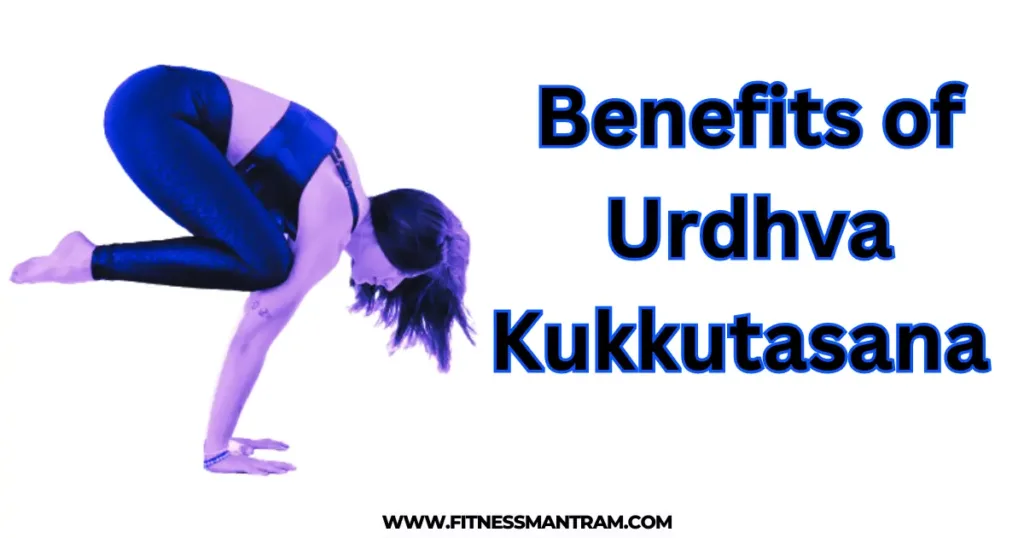Kukkutasana: Master the Rooster Pose and Soar to New Heights
Conquer the powerful Kukkutasana (Rooster Pose) and experience unparalleled strength, balance, and flexibility. This comprehensive guide unveils the secrets of mastering this advanced pose, including its benefits, variations, tips, and safety precautions.

Introduction
Welcome, fellow yogis, on a journey to conquer one of the most challenging and rewarding poses in the Ashtanga tradition – Kukkutasana, or the Rooster Pose. This inversion pose requires strength, balance, and flexibility, but its mastery unlocks a plethora of physical and psychological benefits. In this comprehensive guide, we’ll delve deep into the essence of Kukkutasana, demystifying its technique, exploring its variations, offering helpful tips, and outlining necessary safety precautions. So, spread your wings and get ready to soar to new heights on your yogic journey!
Who should consider practicing Kukkutasana:
Kukkutasana, the Rooster Pose, is a challenging and rewarding yoga pose that offers numerous benefits. However, it’s not suitable for everyone.
Individuals with a strong upper body and core: This pose requires significant strength in the arms, shoulders, and core muscles. If you are new to yoga or lack upper body strength, it’s best to focus on building your foundation first.
People who are comfortable with inversions: This pose is an inversion pose, meaning your head is below your heart. If you are not comfortable with inversions, it’s best to start with foundational poses like Downward-Facing Dog and Chaturanga Dandasana before attempting this yoga pose
Individuals seeking a challenge: This yoga pose is an advanced pose that can be challenging to master. If you are looking for a pose to push your limits and improve your yoga practice, this yoga asana is a great option.
Unravelling the Rooster Pose:
Rooster Pose, a Sanskrit term derived from kukkuta (rooster) and asana (pose), replicates the posture of a vigilant rooster, perched high with its head held proudly and its wings outstretched. This advanced inversion challenges your upper body strength, core engagement, and balance control.
Benefits:

- Strengthens upper body: This yoga pose primarily targets the arms, shoulders, and back muscles, contributing to increased upper body strength and stamina.
- Improves core engagement: Maintaining balance in this pose requires intense core activation, strengthening and stabilizing the abdominal and pelvic floor muscles.
- Enhances balance and coordination: Holding this challenging pose demands exceptional balance and coordination, leading to improved overall stability and body awareness.
- Increases flexibility: In this yoga pose it stretches the hamstrings, groin, and hip flexors, promoting greater flexibility and range of motion.
- Boosts confidence: Mastering this advanced pose can significantly boost your self-confidence and sense of accomplishment.
Variations:
While the full expression in this yoga pose requires significant strength and flexibility, several variations can help you progress towards achieving the final pose:
- Adho Mukha Svanasana (Downward-Facing Dog Pose): This foundational pose strengthens the arms, shoulders, and core, preparing you to perform this pose
- Chaturanga Dandasana (Four-Limbed Staff Pose): This challenging pose builds upper body and core strength, essential for holding in this pose.
- Bakasana (Crow Pose): This inversion pose develops arm balance and core engagement necessary for to preform this asana.
- Eka Pada Kukkutasana (One-Legged Rooster Pose): This advanced variation increases the difficulty of Kukkutasana by lifting one leg off the ground.
Related : Shavasana: Discover the Art of Deep Relaxation
Pros and Cons:
Pros:
- Improves overall physical fitness
- Boosts confidence and self-esteem
- Reduces stress and anxiety
- Improves focus and concentration
- Enhances balance and body awareness
- Increases flexibility and range of motion
Cons:
- Requires significant upper body strength and core engagement
- Can strain the shoulders and wrists if not done properly
- Not recommended for beginners or those with injuries
- May cause dizziness or lightheadedness if not performed correctly
Tips for Mastering Kukkutasana:
- Start with foundational poses: Before attempting to perform this yoga pose, ensure you have mastered basic yoga poses like Downward-Facing Dog, Plank Pose, and Chaturanga Dandasana.
- Focus on core engagement: Maintaining balance in this yoga pose requires strong core muscles. Practice exercises like planks and boat pose to strengthen your core.
- Warm up properly: It is recommended that before attempting to perform this yoga pose you should warm up your body with Surya Namaskara (Sun Salutations) or other dynamic stretches.
- Use props: Use props like yoga blocks or bolsters to assist you in reaching the final pose safely and gradually.
- Practice regularly: Consistent practice is key to mastering this yoga pose. Start with holding the pose for a few seconds and gradually increase the duration as you get stronger.
- Find a good yoga teacher: A qualified yoga teacher can provide guidance and feedback to help you safely and effectively advance towards mastering this yoga asana.
Safety Precautions:
- Listen to your body: If you experience any pain or discomfort, stop immediately and rest.
- Don’t force it: Don’t rush into and try to perform this yoga pose, Progress gradually and only attempt the full expression of the pose when you feel ready.
- Use proper alignment: Maintain proper alignment throughout the pose to avoid injuries.
- Warm down: After practicing this yoga pose, it is advisable to cool down with gentle stretches and relaxation poses.
Urdhva Kukkutasana
(Upward Rooster Pose) is an advanced arm balance pose that requires strength, flexibility, and balance. The pose begins in a plank position with the hands shoulder-width apart and the body in a straight line from the head to the heels. The legs are then lifted off the ground and the body is supported by the hands and arms. The head is lifted and the gaze is directed forward.
Steps to do Urdhva Kukkutasana:
- Start in Downward-Facing Dog Pose (Adho Mukha Svanasana).
- Bend your knees and bring your feet to the inside of your wrists.
- Lift your knees off the ground and straighten your legs.
- Press down through your hands and lift your head.
- Align your body in a straight line from your head to your heels.
- Hold the pose for a few breaths, then slowly lower back down to Downward-Facing Dog Pose.
Variations of Urdhva Kukkutasana
Eka Pada Kukkutasana (One-Legged Rooster Pose) is a more advanced variation of this yoga pose where one leg is lifted off the ground.
Chaturanga Kukkutasana (Chaturanga Pose to Rooster Pose) is a flowing variation of Urdhva Kukkutasana where you transition from Chaturanga Dandasana to Urdhva Kukkutasana.
Benefits:

- Strengthens the arms, shoulders, and core.
- Improves balance and coordination.
- Increases flexibility in the hamstrings, groin, and hip flexors.
- Boosts confidence and self-esteem.
Safety Precautions
- If you have any injuries in your arms, shoulders, or back, talk to your doctor before attempting Urdhva Kukkutasana.
- Start with beginner poses like Downward-Facing Dog Pose and Chaturanga Dandasana to build strength and flexibility.
- Use props like yoga blocks or bolsters to assist you in reaching the pose safely.
- Listen to your body and don’t force the pose.
Progression to Urdhva Kukkutasana
If you’re new to yoga, start with beginner poses like Downward-Facing Dog Pose, Chaturanga Dandasana, and Plank Pose. These poses will help you build strength and flexibility in the arms, shoulders, and core. Once you’ve mastered these poses, you can start working on Urdhva Kukkutasana.
Given below are some tips for progressing to Urdhva Kukkutasana:
- Start by practicing the pose with your knees bent and your feet on the inside of your wrists.
- Once you can hold the pose with your knees bent for a few breaths, try straightening your legs.
- You can also use props like yoga blocks or bolsters to assist you in reaching the pose safely.
- Be patient and don’t force the pose. It takes time and practice to master Urdhva Kukkutasana.
Read More: Gomukhasana: Discover the Healing Power of Gomukhasana
Why is Kukkutasana Important?
This yoga pose offers a multitude of benefits that make it a valuable addition to your yoga practice:
Increased Strength and Flexibility: This pose significantly strengthens the arms, shoulders, core, and even the legs. Additionally, it stretches the hamstrings, groin, and hip flexors, enhancing overall flexibility.
Improved Balance and Coordination: Maintaining balance in this yoga pose requires exceptional coordination and control over your body. Regularly practicing this pose can significantly improve your balance and stability.
Boosted Confidence and Self-Esteem: Mastering a challenging pose like this yoga pose can significantly boost your self-confidence and sense of accomplishment. This can have a positive impact on all areas of your life.
Enhanced Focus and Concentration: Holding and balancing in this yoga pose requires intense focus and concentration. Regularly practicing this pose can improve your ability to stay focused and present in the moment.
Reduced Stress and Anxiety: The physical and mental challenges requires while performing this yoga pose, can help release stress and anxiety, leaving you feeling calm and centered.
Overall Fitness Improvement: This yoga pose works a variety of muscles and improves various aspects of your physical fitness, making it a valuable addition to any exercise routine.
While this yoga pose offers numerous benefits, it’s essential to remember that it’s an advanced pose. It’s crucial to have a strong foundation in yoga and to approach the pose with caution and proper technique. Consult a qualified yoga teacher for guidance and ensure you are physically ready before attempting to perform this yoga asana.
Conclusion:
This yoga pose stands as a testament to the transformative power of yoga. By conquering this challenging pose, It is an advanced pose and should be approached with patience and caution. By following the given above tips and practicing safely, you can gradually progress towards mastering this challenging and rewarding pose.
Frequently Asked Question
Q. How long should I hold Kukkutasana?
A. Start by holding the pose for a few seconds and gradually increase the duration as your strength and flexibility improve. Aim to hold the pose for 5-10 breaths eventually.
Q. Can I practice Kukkutasana during menstruation?
A. It’s generally recommended to avoid inversions like Kukkutasana during menstruation. The inverted position can aggravate menstrual cramps and discomfort. Consider practicing alternative poses that focus on grounding and stability.
Q. Can I practice Kukkutasana at home?
A. Yes, you can practice Kukkutasana at home, but ensure you have a safe space with enough room and proper equipment like yoga mats and blocks. Consider online yoga tutorials or guidance from a qualified yoga teacher for proper form and technique.
Q Is there a specific diet that I should follow to help me practice Kukkutasana?
A. A balanced diet rich in fruits, vegetables, and whole grains provides the energy and nutrients your body needs for yoga practice. You can also consider incorporating protein-rich foods to support muscle growth and repair.
Q. Are there any risks associated with Kukkutasana?
A. Like any yoga pose, there are potential risks associated with Kukkutasana, especially if performed incorrectly. These include:
- Straining the shoulders, wrists, or back
- Falling and injuring oneself
- Inversion-related side effects like dizziness or lightheadedness
It’s crucial to practice with caution, listen to your body, and avoid pushing your limits.
Q. What should I do if I feel pain while practicing Kukkutasana?
A. Stop immediately if you experience any pain or discomfort while practicing Kukkutasana. Rest and consult a healthcare professional if the pain persists.
Q. What are some alternative poses to Kukkutasana?
A. If you’re unable to practice Kukkutasana, consider these alternative poses that offer similar benefits:
- Plank Pose
- Chaturanga Dandasana
- Dolphin Pose
- Bakasana
- Warrior III Pose
These poses help build strength, flexibility, and balance, working towards achieving the full Rooster Pose.
Remember, consistency is key to mastering Kukkutasana. Practice regularly, listen to your body, and enjoy the journey of conquering this challenging and rewarding pose.
You may also like
9 Amazing Benefits of Chakrasana
The Secrets of Siddhasana: 15 Astonishing Facts Revealed
Padmasana: 10 Amazing Benefits of Padmasana